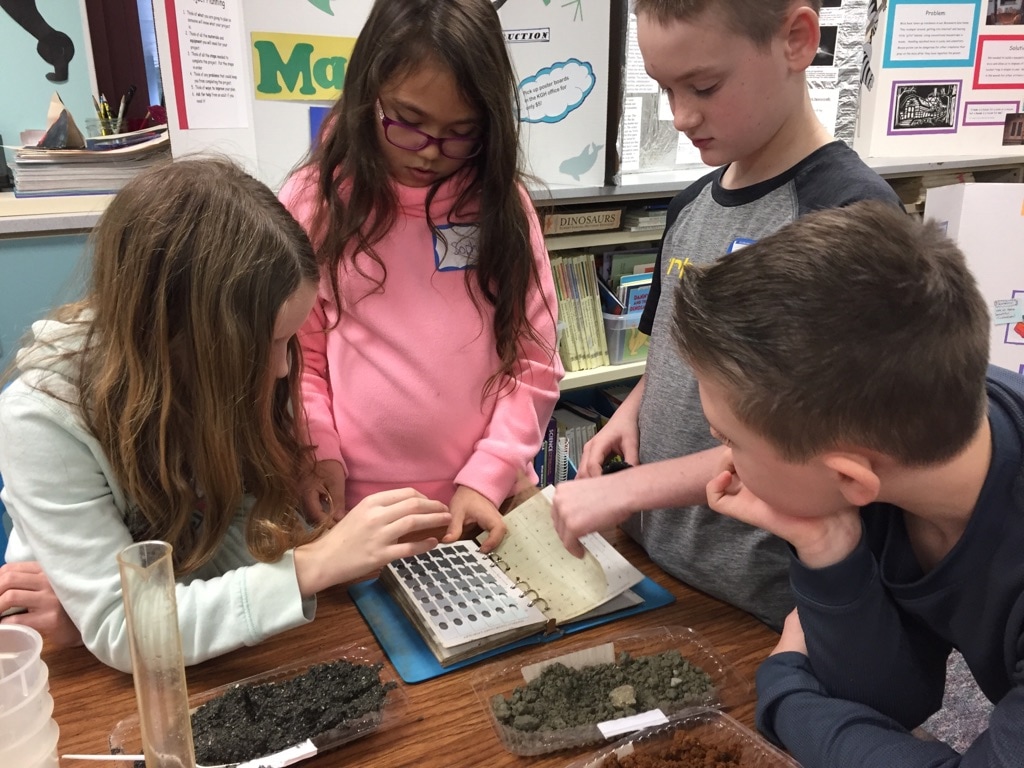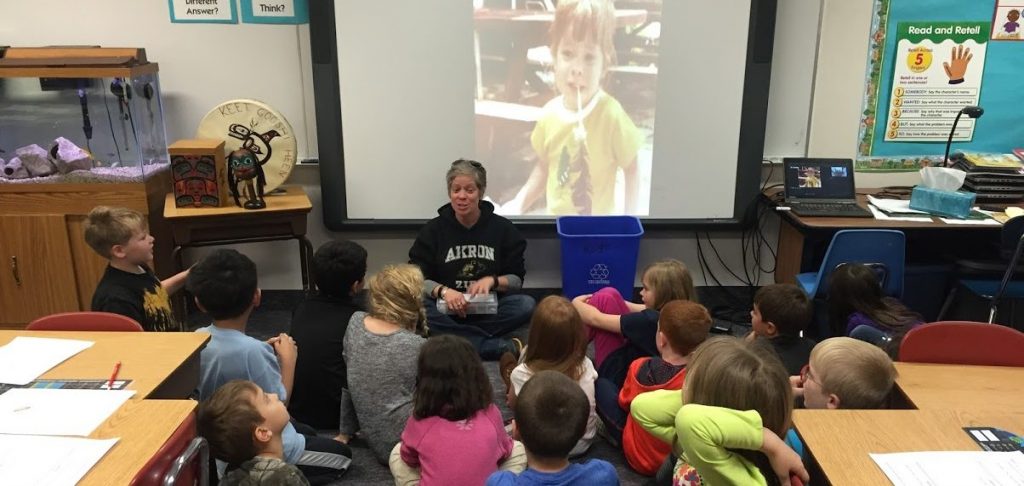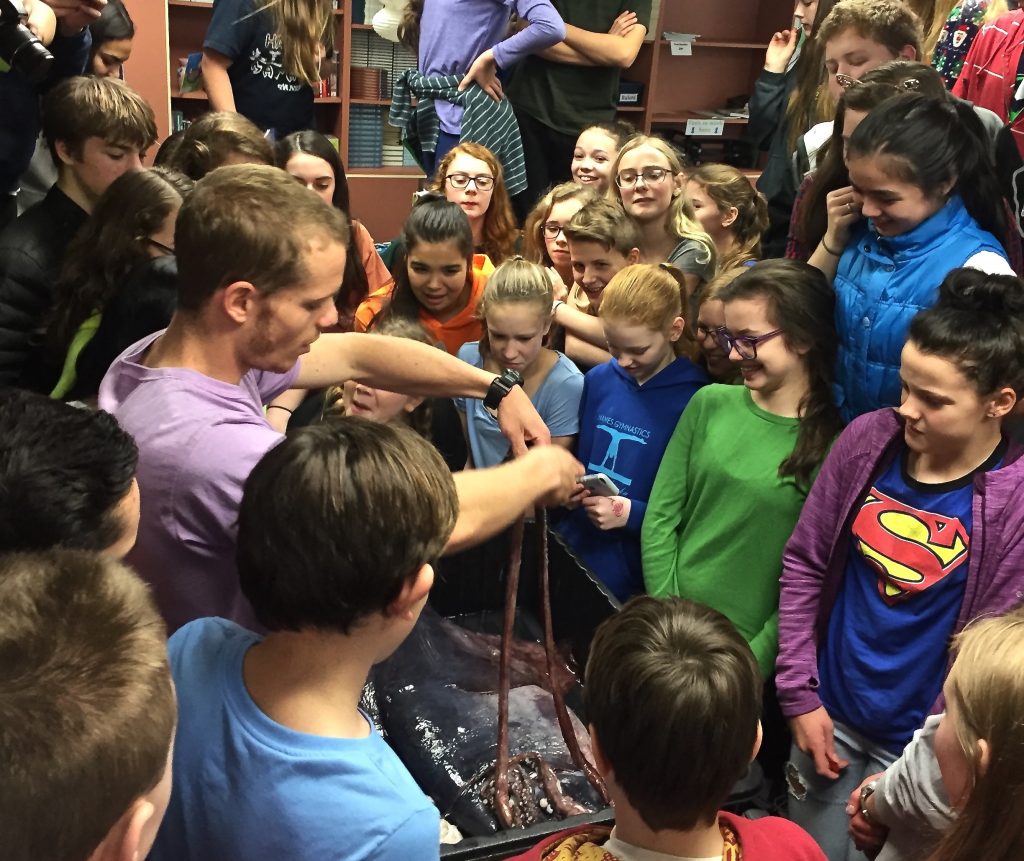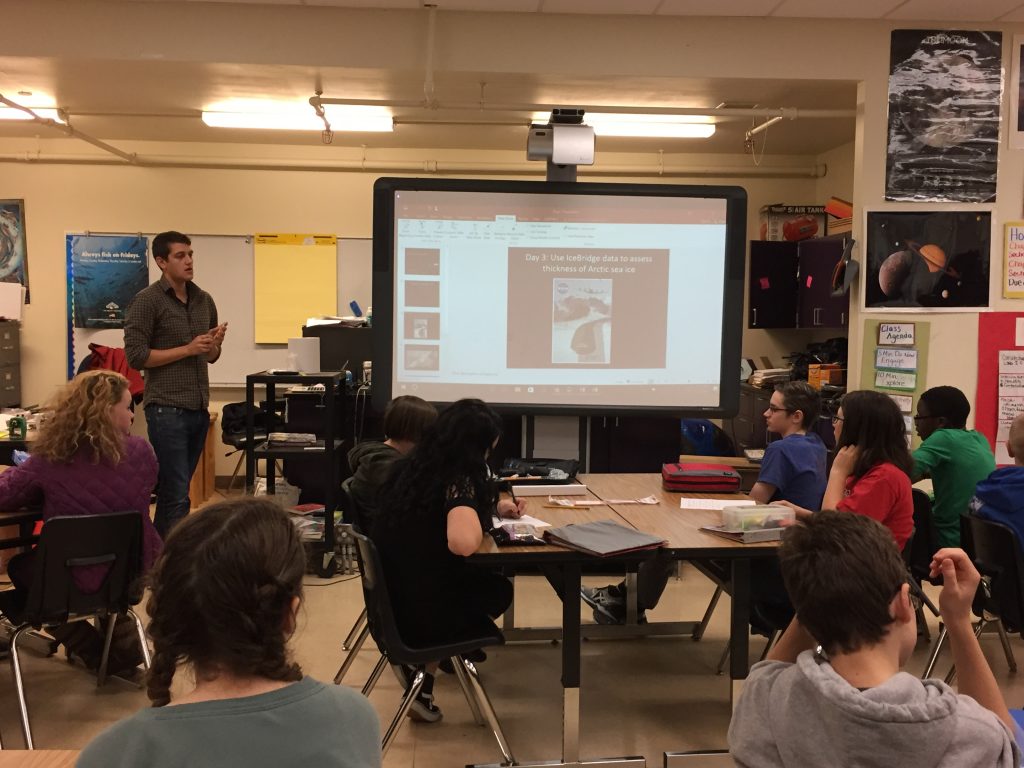
What happens in the classroom during SIS units?
Don Sineti, sea shanties and marine naturalist visited 5th graders for squid dissections and 1st graders for whales and music. Don who visits for an entire week every Whalefest, also met with pre-schoolers, elders, the Rotary and also performed in a radio session and for a new event, “Whaling in the days of Moby Dick” hosted by the Sitka Maritime Heritage Society.
Lauren Bell, kelp forest ecologist with University of California, Santa Cruz facilitated a scientific study with 9th graders at Sitka High Schoolers titled, “Little Inverts, Big Appetites”. Students examined the effects of temperature on the grazing rates of different invertebrates. They practiced scientific methodology and research practices to draw conclusions about the effects of rising temperatures on the feeding habits of marine invertebrates and the impacts on kelp forest food webs.
Kristy Kroeker, climate ecologist with University of California, Santa Cruz taught 10th graders at Sitka High School how to measure metabolic requirements of small marine invertebrates – in this case, green sea urchins – using a respiration chamber. Students learned about physiological differences between ectotherms and endotherms and made predictions about the effects of temperature on oxygen consumption. The students’ dissolved oxygen data was graphed and trends discussed to draw conclusions about effects of climate change on kelp forest ecology.
Maggie Castellini, University of Alaska, Fairbanks and Natalie Rouse, Alaska SeaLife Center facilitated a number of marine mammal necropsies for high school students at MEHS and undergraduates visiting in Sitka for Whalefest. Before Dr. Castellini demonstrates the practices for necropsy, field scientist Steve Lewis prepares the students with a lesson on marine mammal adaptations.
Andrew Cyr, University of Alaska, Fairbanks also traveled to Sitka to conduct fish workshops with both high school students from Pacific High School and Sitka High School and undergraduates here for Whalefest. Andrew has a long-term data base of tissue analysis from fish throughout Alaska and he teaches students how to dissect and sample tissues from Sheldon Jackson hatchery to add information to the data record. His workshops provide a whole new perspective on salmon!
Veronica Padula with the Ecosystem Conservation Office of the Aleut Community of St. Paul Island made her annual trip here to meet with MEHS Marine Biology and Field Science students to develop citizen science plans regarding field studies associated with microplastics in the marine environment and other on-going research. Veronica has been an active collaborator in supporting rural student research.
Angie Bowers, SSSC’s Aquaculture Director, visited all 5th grade classrooms to talk about aquaculture and salmon ecology in conjunction with Unit 2 of their National Geographic language arts curriculum. Over the course of two days, students explored both the ecological and economical importance of salmon in our ecosystem through games and hands-on activities, including holding eyed eggs, tagging salmon fry, and measuring average weights of smolts.

Lara Rokentenz, University of Akron Field Station – the wildly popular “Dr. Rocket” came back to the 2nd grade classes at Keet Gooshi Heen for the first Scientists in the Schools of the 2017 – 2018 school year. Students extended their understandings of Unit 2 vocabulary terms in their National Geographic language arts curriculum by making observations about habitat and animal adaptations. Then, these 2nd graders became engineers and constructed an invention inspired by nature in the process referred to as “biomimicry”.

Ben Burford, squid ecologist from Stanford’s Hopkins Marine Laboratory trained 9th graders at Sitka High School to measure and sample squid and submit their data to his extensive data base. Ben facilitated an analysis of the data so that students learned about squid life history. As ocean temperatures rise, Sitkans have observed that market squid have pushed their northern limit into local waters and squid researchers are keenly interested in what can be learned about their role in this ecosystem.

Alek Petty, NASA scientist from University of Maryland worked with 7th graders at Blatchley Middle School on predicting sea ice changes. After an introduction to sea ice through a series of demonstrations and activities, Dr. Petty shared satellite data with students so that each student could plot data, establish a trend line and make predictions about the time of an ice-free Arctic. Students also examined fly-over data that measured sea ice thickness.
